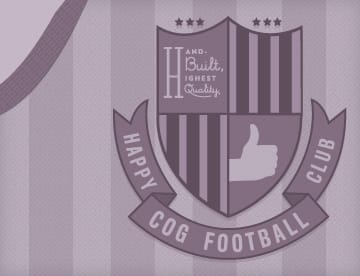- August 9, 2012
Total Design
In the 1960s and 70s Ajax, a Dutch soccer team, captivated people with long stringy hair, scruffy sideburns, and a legendary tactical system known as ‘Total Football.’ Don’t worry, non-sports-loving nerds, I’ll get to my point soon. What was remarkable about Total Football was the ability of everyone on the team to change position and tactics with fluidity and speed. Anyone, it was thought, could play anywhere on the pitch. Attackers converted to defenders. Defenders converted to attackers. Back and forth in the blink of an eye.

For the system to be successful, everyone not only knew their own roles but also had an awareness of their teammates’ roles. Every player knew they had chances to lead the team forward and everyone was responsible for the larger group.
Systems and Designers
At Happy Cog, most of us don’t play much soccer nor do we have awesome 70s Dutch hairstyles. I use Ajax as an example of a team of people working with a collective ethos of a great system based on variety, flexibility, and empathy.
We like to organize our project teams at Happy Cog in a way that parallels this idea of a great tactical system. Let’s call it ‘Total Design.’ We often break down our projects in defined phases (discovery, prototyping, graphic design, templates, back-end development), but that doesn’t mean our team breaks down in the same siloed way. A graphic designer may code templates. An information architect could create a sitemap for a site within a CMS. A front-end developer could design modules and grids in template coding. A project manager might write a content guidelines document. Everyone has a variety of skill sets, and the flexibility to apply their best thinking in a way that best serves the project.
How do we manage to avoid the jack-of-all-trades, master-of-none problem? We have a team of smart people who bring a toolbox full of expertise to our projects. However, as we’ve applied this approach over time, we’ve found people shouldn’t be asked to lead any more than two distinct phases of a project. It’s not good for the client, the project, or the team member to have just one person’s vision applied to a project. Just like for the Dutch, it’s better when the defenders have a turn to attack and the attackers have a turn to defend.
Designing for Empathy
When a team has a variety of points of view on a project, that builds empathy for each other. It brings a better understanding of the flexibility needed to collaborate to complete a task. The empathy grows out of that and sustains support for each other and awareness of where someone can step up and offer to lead when needed.
When you put together your project team, how do you determine who fits into what role? How have you evolved your process to allow your team members to step up and participate in other parts of the process?